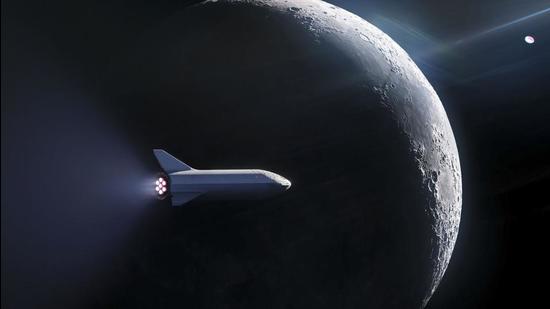The evolution of the space race
A few steps that were taken by man then did lead to many giant leaps for mankind. Currently, over 70 countries have their own space programmes
The erstwhile Soviet Union launching the world’s first artificial satellite, Sputnik 1, into outer space in October 1957 was a watershed moment in human history. It marked the first shot in the space race. The Soviets followed it up with a series of firsts. The first living creature, Laika, a Siberian husky, was launched into the earth’s orbit in Sputnik 2. Lunik 3 was later launched to photograph the dark side of the moon.

These events occurred at the peak of the Cold War. The two superpowers were battling it out across theatres, from aerospace and nuclear capabilities to Olympic game performances.
The United States (US), which had perceived military superiority over its great rival, was stunned to suddenly find itself in a position where it had to play catch-up. But the US quickly regrouped. The National Aeronautics and Space Administration (Nasa) was established in October 1958.
The Soviets still stayed ahead, and won the race to put the first man in outer space. US President John F Kennedy announced the Apollo programme soon afterwards, with landing the first person on the moon by the end of that decade being the stated objective. The US succeeded and decisively surged ahead.
A few steps that were taken by man then did lead to many giant leaps for mankind. Currently, over 70 countries have their own space programmes.
Concurrently, India evolved into a space powerhouse. Soon after the initial Soviet space successes, Prime Minister Jawaharlal Nehru took the initiative to create the Indian National Committee for Space Research (INCOSPAR). Led and guided by stalwarts such as Vikram Sarabhai and Homi Jehangir Bhabha, it counted APJ Abdul Kalam as among its early members. India launched its first rocket as early as 1963. Incredible photographs still circulate from those days, of rocket parts taken to the launch centre in Thumba, an obscure rural village in Kerala, on bicycles.
The Indian Space Research Organisation (Isro) was later formed out of INCOSPAR. ISRO’s Chandrayaan missions since then have landed, and even confirmed the presence of water on the moon. India’s Mars Orbiter, Mangalyaan entered the red planet’s orbit at a cost that was just 11% of Nasa’s Mars mission.
Currently, there are ongoing missions run by various nations, to explore planets as far as Pluto. There are attempts to set up research stations even on the moon. Space satellite technology has disrupted the communications and broadcasting sectors, and is now being used to deliver the internet to the remotest of places on the earth’s surface, wherever there is a shortage of basic infrastructure for connectivity. A few countries have even kick-started space mining projects. All these endeavours can have far-reaching positive outcomes. Meanwhile, a few tech billionaires have commenced a new race — of private space flights into space. Although currently seen as a macho contest between ultra-rich moguls, progress in this sector could one day make space travel and tourism a very exciting prospect.
Overshadowing these occurrences, US intelligence sources obtained information that China recently conducted two earth-circling hypersonic nuclear weapon tests. These would make the existing air defence systems obsolete. The US issued a statement saying that it is concerned about China’s novel nuclear-capable delivery systems.
This is hardly surprising since the burgeoning number of carriers and military bases in the Indo-Pacific, and elsewhere, meant to check expanding Chinese influence, at present has no defence against this innovation.
Pentagon’s top general Mark Milley described these tests as “close to a Sputnik moment”. India, the US, Russia, and France are among the other nations working on similar weaponry. China’s breakthrough will definitely spur other nations on to quickly gain ground, since, unfortunate as it is, the promise of retaliation and Mutually Assured Destruction remains the lone deterrence and protection against these lethal weapons. This would also be the harbinger of another, more potent and expensive space and nuclear-arms race, making our turbulent planet an even more dangerous place to live in.
Anil K Antony is a tech entrepreneur and public policy commentator, and works on Congress’s digital initiatives
The views expressed are personal
All Access.
One Subscription.
Get 360° coverage—from daily headlines
to 100 year archives.



HT App & Website







